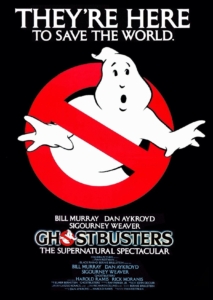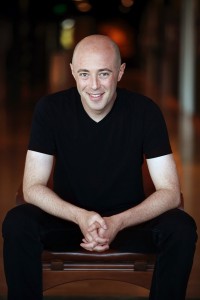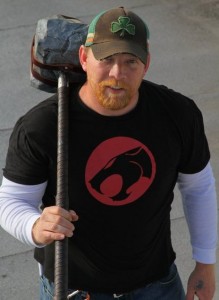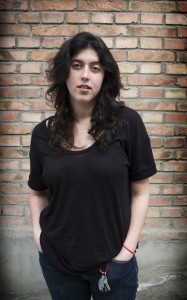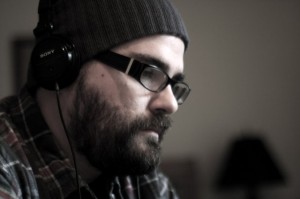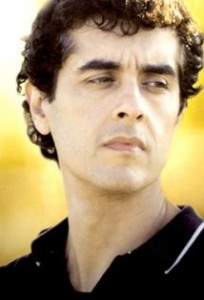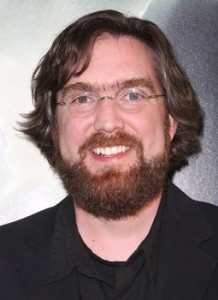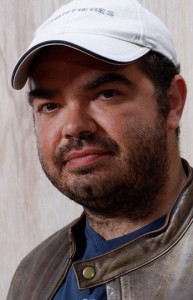Mark Walsh has been animating with Pixar going back to “A Bug’s Life”. He took on the role of Directing Animator for Dorey on “Finding Nemo”. Most recently he has gone behind the camera and directed the newest Toy Story Toons called “Partysaurus Rex”. Personally, I think it is brilliant and my personal favorite of any Pixar short. Media Mikes had a chance to really dive in about the short with Mark and find out some really cool facts about the film.
Mike Gencarelli: You’ve been with Pixar almost since the beginning, how was it stepping away from the animating desk and behind the camera directing the Toy Story Toons short “Partysaurus Rex”?
Mark Walsh: I love it. I have been reading articles about different actors who are turning directors. Largely what an animator is an actor. So to move to directing has been a similar experience. I think it is really fun and I enjoy the collaboration of it, even more than animating. I think animating is trying to create an emotion or feeling and directing is the same thing but on a larger scale. Yes, there are many more things to worry about. Yes, the buck stop with you…but the feeling of creation and collaboration, especially when something works is unparallel. I love it.
MG: Where you nervous at playing with the “Toy Story” brand?
MW: Not really. I am familiar with the characters. I worked with them before on the TV commercials for “Toy Story 3”. Working with the creator of the series, John Lasseter, there isn’t anything that he would let through that isn’t right. John will really be interested in how each director is going to push things. I think that is why “Toy Story 3” feels like a “Toy Story” film but also feels like a Lee Unkrich film. That is because John invites the input of the new director and he still makes sure it stays within the world. So with that support on hand, I felt invigorated to try new things. “Partysaurus Rex” is pretty different than the usual. But it I was happy knowing that the guardians of the franchise, here at Pixar, were there to make sure that I didn’t step out of bounds.
MG: I like that Rex gets a chance to shine. He is a funny character!
MW: Isn’t he great!? Rex is just such a sweet character. What I like most about Dorey from “Finding Nemo” is that she is a comedy relief character. But she is rare comedy relief character that gets a spotlight to see what it is like to be the comedy relief character. In her case, it is kind of sad. Rex is similar in a way. He is so nervous and nerdy that he funny. However what is it like to actually be that guy? I had that experience in school when I was a kid. So I just tapped into that for the movie.
MG: How long did this short take to make from idea to completion?
MW: A long time actually. It took about two years from start to finish, which seems long for six and half minutes. But there are two things that were going on. First, we had to wait for “Small Fry” to get finished. They were both produced by our sister studio at Pixar Canada. They are a really small studio, smaller than Pixar was when I came on during “A Bug’s Life”. They have a really great culture there but they can’t handle five or six shorts at the same time. Both Angus MacLane and I started on our shorts at the same time but I had to wait until they finished. Also it took two years since the itself process is just very long and arduous. There isn’t any stage of the production where the questions aren’t asked “Can we make this better?”, “How can we approve this?”, or “Can we add any more entertainment value here?”. That takes time. I was really pleased though because the shorts at Pixar gets treated the same way that the features do.
MG: Tell us about collaborating with BT for the music?
MW: BT is amazing. You listen to electronic dance music and some people think “How hard could it be?”. You have a drum beat and maybe some synthesizers. BT is not one of those people. He is an artist. What I liked about BT’s work is that it has the most emotion to me compared to other artists and DJs. When you are working in film, especially a short like “Partysaurus Rex”, emotion is what you are after. I wanted music that would be like a second character. I am very glad he found the time for us and that we were able to collaborate. The music gets louder, more intense and a bit crazier as the film goes on along with the party. So it kind of represents the party in a way. The music had to start small and get crazy, so the biggest challenge was reining it in. BT was able to do that so well. He just brought idea after idea and that was the best part of working with him.
MG: How does it feel to be the first Pixar short to not only have a MP3 single but also get a level in video game “Tap Tap Revenge”?
MW: I love it. Usually shorts don’t get this short of reaction. Especially a franchise related short. I was just trying to create this story with fun music that matched it. I wasn’t even sure if people would like it, but the response has just been amazing. It has been positive for all ages, especially young people. There is so much music that BT made, but the film just wasn’t long enough. We kept getting request after request for music from the film. On the single, BT had used “Partysaurus” as the inspiration even including dialogue and created this track, which plays so well on the dance floor. I listen to it every day and I feel that it even works better than the version in the film.
MG: How many hidden Pixar nods are there in this short, like the Sulley toilet cover?
MW: [laughs] Yeah, there is a lot in there actually. There is quite a few “Finding Nemo” references, since I worked on “Nemo” as the directing animator for Dorey. When we cut to the underwater guys and the “What Up Fishes” scene, Mr. Ray from “Finding Nemo is down there as well as one of the dolphins from that film. There is T-Bone from “Small Fry”, who floats by. There are a lot of “Toy Story 3” characters. But I am not going to tell you all of them; I want people to find them out for themselves.
MG: You also voice the new character Drips the Whale, tell us about that?
MW: When you are trying to get the story worked out, you are looking for something that is funny and gets it done. I liked the idea of a faucet cover, so kids won’t hit there heads, and I’ve seen them for sale. I thought it would be funny to have it coming out of his mouth, so he was permanently talking like this [mumbling in Drips’ voice]. We always record our voices as temporary voices when we are developing the story. It helps us find out if the movie is working before you bring in Tom Hanks or Tim Allen, which is great. Drips and also Puffy, aka “What Up Fishes” are my voices. Due to time, the fact that it was already funny and we didn’t have a name star attached to play them, John said “Why not!”. So I felt very lucky it is rare that a temporary voice gets to stay in the film.
MG: Do you have plans to take sight on features next to direct?
MW: I hope so. In Hollywood, everyone always says “I am doing this now, but what I really want to do is direct”. Everyone thinks that it is better, but it is really hard work. This was actually the hardest job that I have ever had but it is also the most gratifying. I am happy to just keep, as they say “doing the reps”, lifting weights to get my skills up. What has always been important to me at Pixar is that my craft is good. So I hope that I still have opportunities moving forward to keep improving on that craft. Until then, I am just building up my biceps [laughs].
